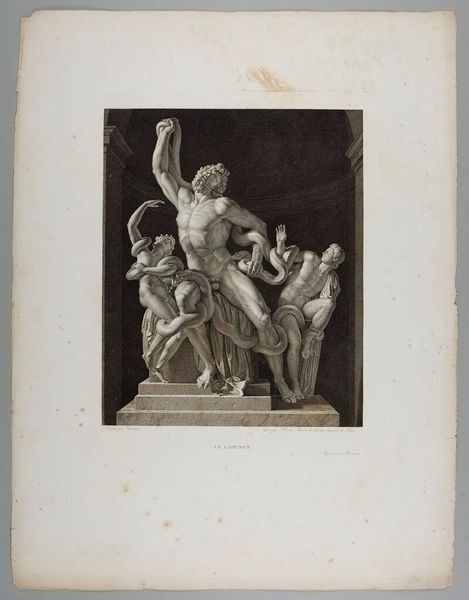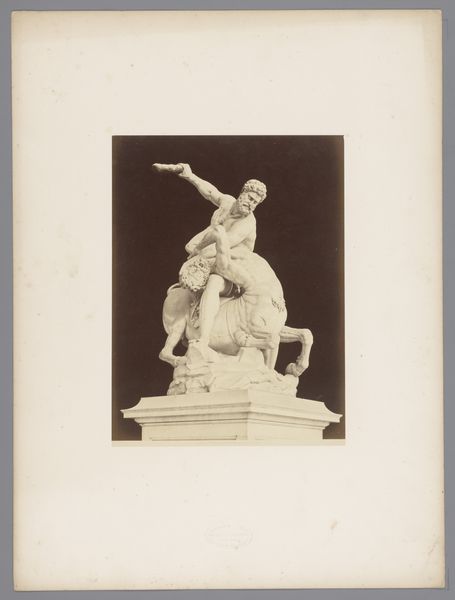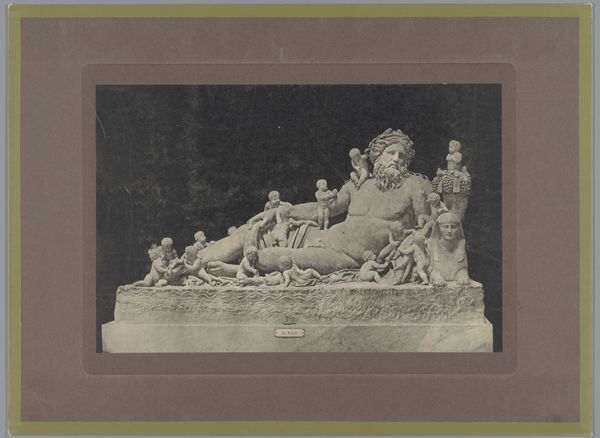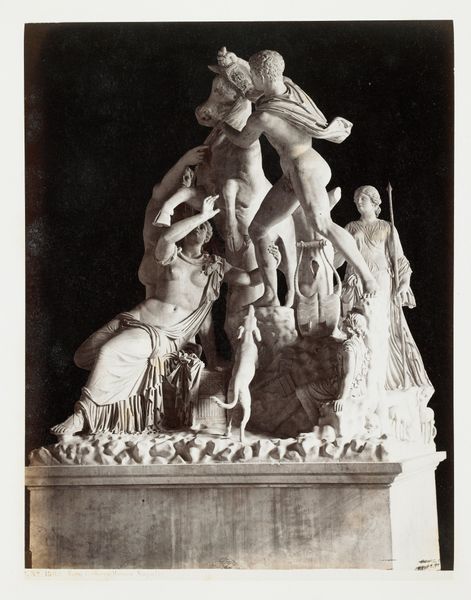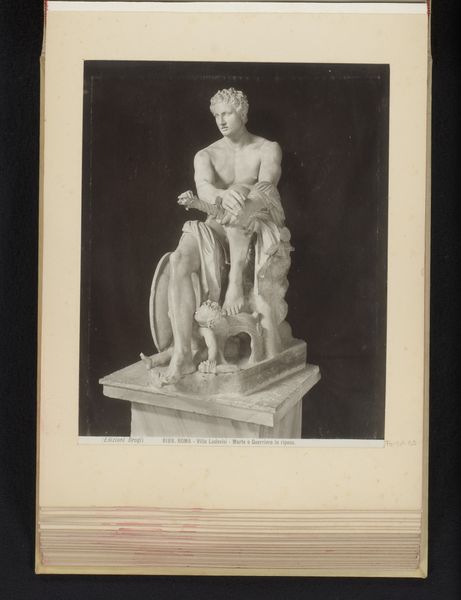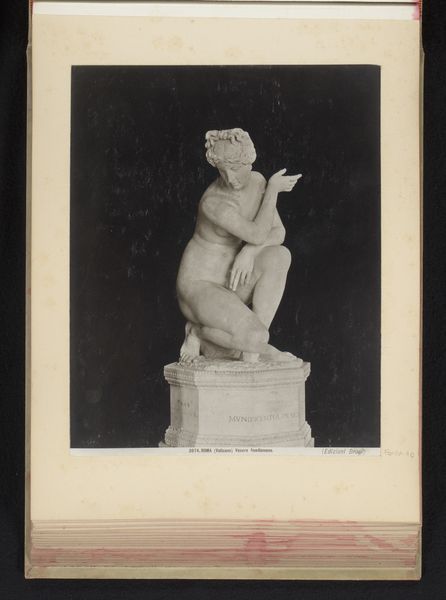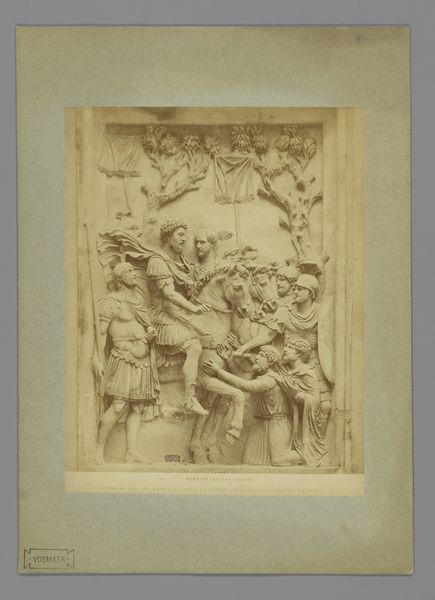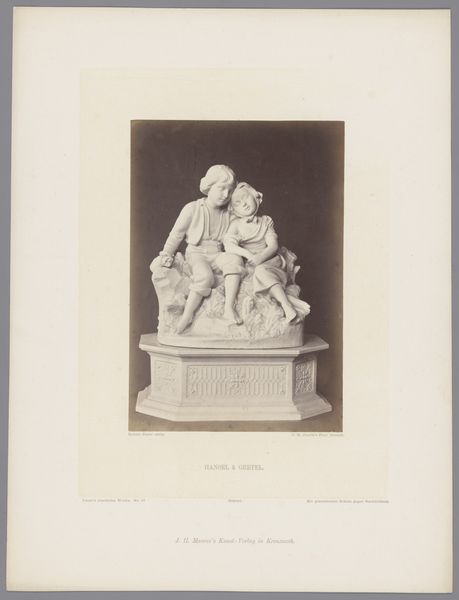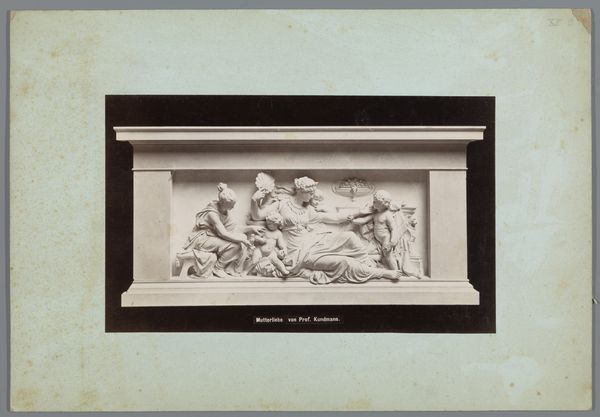
bronze, photography, sculpture
#
portrait
#
sculpture
#
greek-and-roman-art
#
bronze
#
figuration
#
photography
#
sculpture
#
history-painting
#
academic-art
Dimensions: height 248 mm, width 200 mm
Copyright: Rijks Museum: Open Domain
Editor: Here we have a photograph, dating from before 1907, by Edizione Brogi depicting the sculpture "Laocoön and His Sons" within the Vatican Museums. The sculpture shows Laocoön and his two sons in a harrowing struggle with giant snakes. The whole scene feels intensely dramatic, emphasizing pain and suffering. What can you tell us about this work from a historical perspective? Curator: This photograph presents us with a fascinating layering of history. We’re not just looking at the Laocoön group, which is a pivotal work of ancient sculpture profoundly influencing Renaissance and Baroque art. We're also engaging with the politics of its display and reception through this photograph. Think about the power dynamics at play. The Vatican’s acquisition and display of the Laocoön cemented its cultural authority. What do you think about photography being used to reproduce and circulate such iconic works? Editor: I hadn't thought of the photo itself as another layer! So the circulation of images like this… did it democratize access, or did it simply extend the Vatican's influence? Curator: That's precisely the question. Widespread photographic reproduction arguably served both purposes. It enabled broader audiences to engage with classical art but simultaneously reinforced existing power structures by further canonizing specific artworks and institutions. Did the viewer’s interpretation change once they saw a photo instead of seeing it in person? Editor: That's a lot to consider! It seems a simple photograph holds a surprisingly complex story about art, power, and accessibility. Curator: Precisely. Recognizing these layers encourages us to consider how artworks function within broader social and political contexts. It challenges the idea of art existing in a vacuum.
Comments
No comments
Be the first to comment and join the conversation on the ultimate creative platform.
